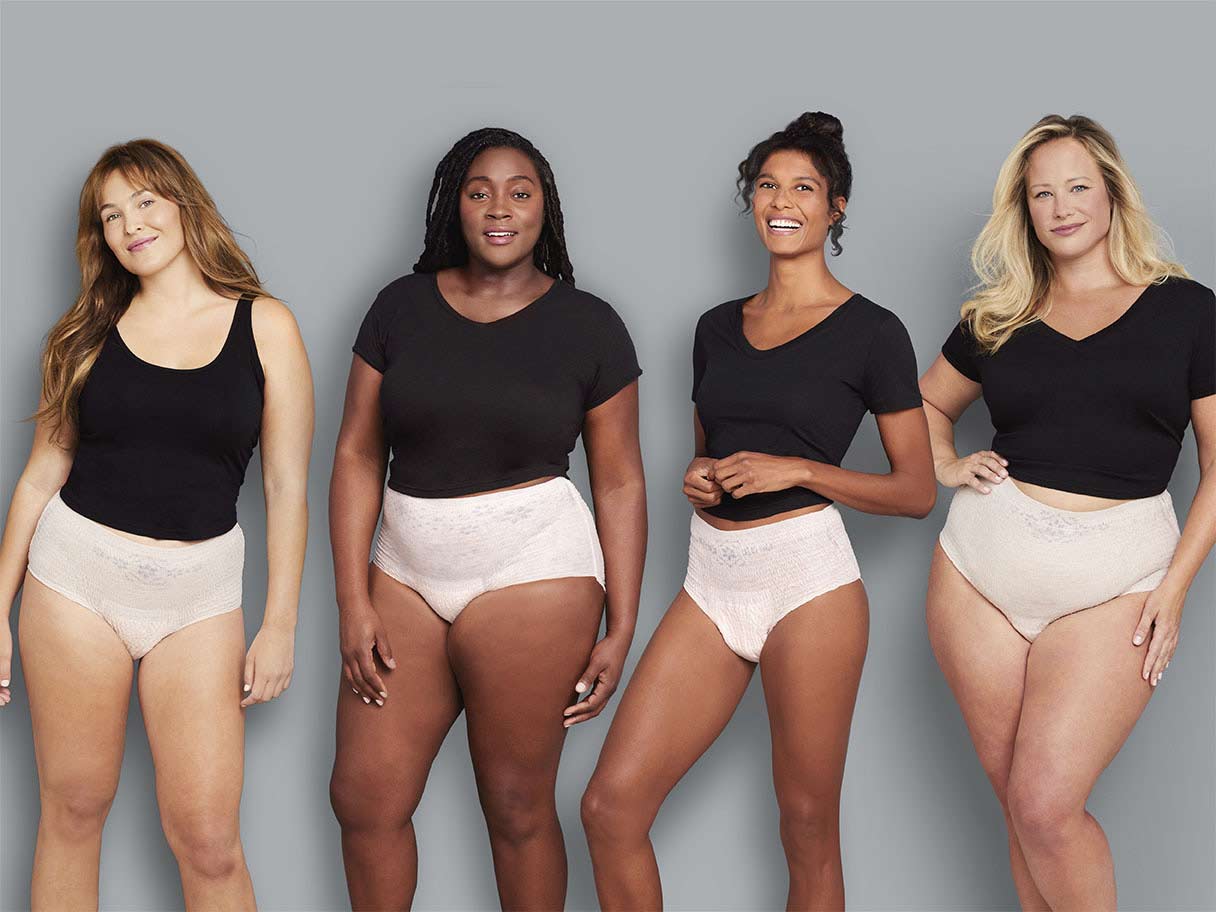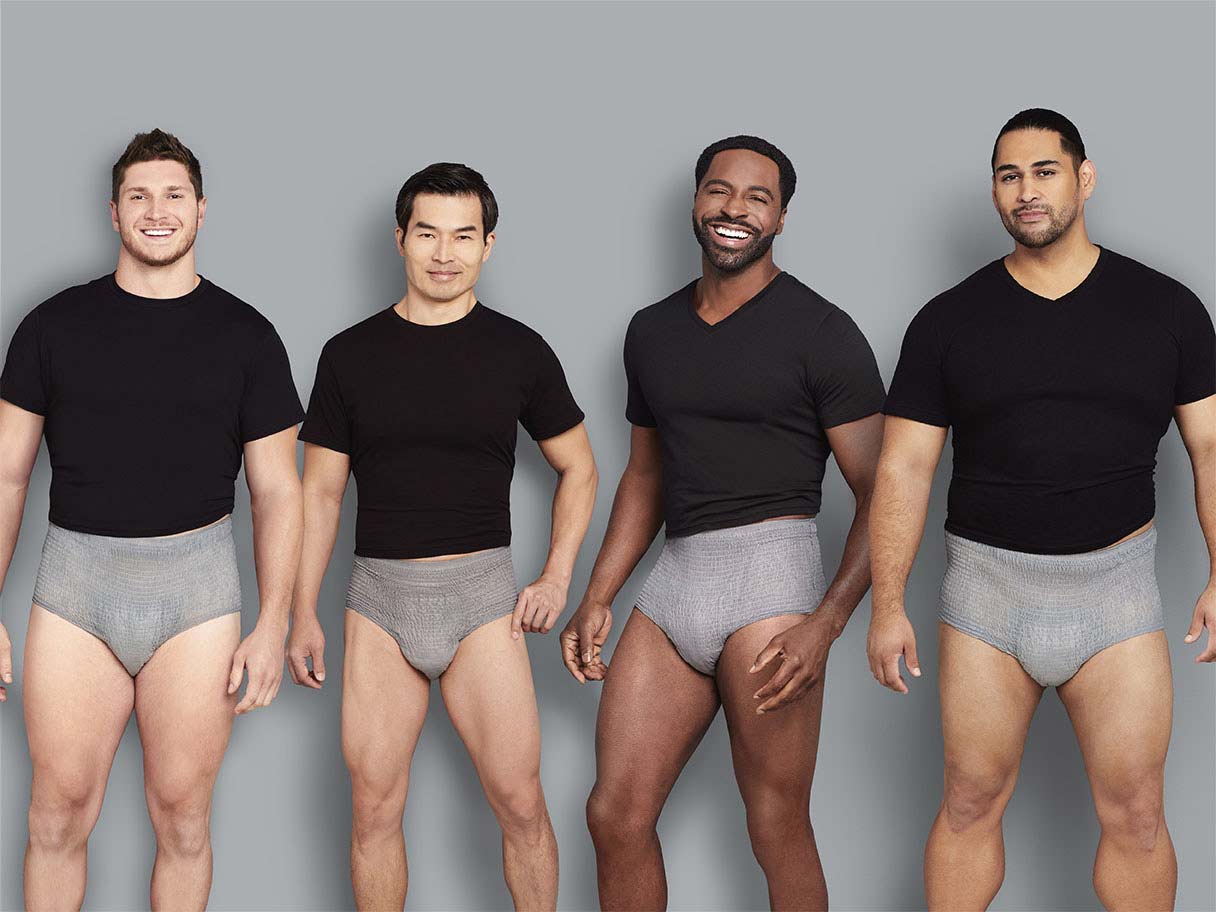Ménopause et incontinence
Ménopause et incontinence
Contrôle de la vessie
Pendant et après la ménopause, les niveaux d’œstrogène diminuent naturellement. Les tissus vaginaux, y compris ceux de la vessie et de l’urètre (le tube par lequel l’urine est évacuée du corps), exigent que les œstrogènes demeurent forts et souples. À mesure que les niveaux d’œstrogène diminuent lors de la ménopause, ces tissus s’amincissent et s’affaiblissent, ce qui réduit votre contrôle.
Voici les problèmes qui risquent de se développer à la suite des changements attribuables à la ménopause :
Incontinence à l’effort. Les niveaux d’œstrogène diminuent naturellement durant la ménopause, tandis que le sphincter, l’urètre et les tissus pelviens s’affaiblissent. Ce changement peut nuire à la rétention de l’urine, ce qui entraîne des fuites lorsqu’une pression est exercée sur la vessie (notamment lorsque vous toussez, éternuez ou soulevez un objet). C’est un des types de fuites urinaires les plus courants chez les femmes.
Incontinence d’urgence. Les niveaux d’œstrogène diminuent naturellement durant la ménopause, tandis que le sphincter, l’urètre et les tissus pelviens s’affaiblissent. La vessie a plus de difficulté à s’étirer pour accumuler l’urine. À mesure que la vessie se remplit, la perte d’élasticité cause de l’irritation, ce qui entraîne des envies plus urgentes d’aller à la toilette.
Polyurie nocturne. Le besoin d’aller uriner plusieurs fois pendant la nuit.
Incontinence fécale 101
L’incontinence fécale, aussi appelée incontinence anale ou fuites intestinales accidentelles, est l’incapacité à contrôler les mouvements de l’intestin, ce qui entraîne des fuites fécales. Ces fuites peuvent être en petites quantités et comprendre du mucus ou des selles liquides, ou plus fréquemment, des selles solides. Elles peuvent s’accompagner de symptômes tels qu’un besoin urgent d’aller à la selle ou des pertes de selles, de la diarrhée ou de la constipation. On retrouve deux types courants de fuites fécales :
- Incontinence fécale par impériosité – Vous avez une envie soudaine d’aller à la selle, mais vous êtes incapable de vous retenir jusqu’à la toilette.
- Incontinence fécale passive – Vous n’avez rien senti dans votre corps qui vous indiquait que vous deviez aller à la selle.
Même si ce problème peut être embarrassant, il est important de savoir que l’incontinence fécale est un problème courant et gérable. Environ 18 millions d’adultes, soit 9 % de femmes et 8 % d’hommes, souffrent de ce type d’incontinence. L’incidence des pertes fécales augmente avec l’âge.
De nombreuses personnes ont le réflexe de s’empêcher de sortir à cause de l’incontinence fécale, mais ils pourraient régler ce problème simplement en trouvant les bons sous-vêtements pour les aider à gérer cette condition et à reprendre confiance en eux. Trouvez ce qui fonctionne le mieux pour vous.
Étant donné que chaque corps est différent, parler à votre médecin de vos symptômes particuliers est la meilleure façon de gérer, de réduire et même d’éliminer les fuites.
Facteurs de risque liés aux fuites intestinales
Les muscles et les nerfs du rectum et de l’anus doivent travailler ensemble pour retenir les selles et vous avertir lorsque votre intestin est plein et qu’il doit libérer des selles. Cette communication peut ne pas se faire pour de multiples raisons. Voici quelques-unes des causes les plus courantes :
- Constipation chronique (entraîne un étirement et un affaiblissement des muscles de l’anus)
- Constipation attribuable à un « trop-plein » qui peut survenir lorsqu’il y a une accumulation de selles et que des selles non formées passent à travers le bouchon
- Diarrhée attribuable au syndrome du côlon irritable (SCI), à la maladie du côlon irritable (MCI), à l’alimentation, à la prise de médicaments, etc.
- Maladie ou trouble neurologique (p. ex., sclérose en plaques, AVC, blessure à la moelle épinière)
- Déficit cognitif
- Anomalies obstétriques
- Blessure et chirurgie colorectale
Syndrome du côlon irritable (SCI) comparativement à incontinence fécale
Le syndrome du côlon irritable est un trouble gastro-intestinal qui entraîne des symptômes tels que des douleurs abdominales, de la diarrhée ou de la constipation, des ballonnements, des urgences intestinales, l’impression de ne pas avoir évacué toutes les selles après être allé à la toilette et l’incontinence fécale.¹
De 10 à 15 % d’Américains souffrent du syndrome du côlon irritable et pour un grand nombre d’entre eux, ce trouble se manifeste par une incontinence fécale.² Il existe de multiples traitements pour le SCI qui aident à améliorer les symptômes d’un individu à l’autre. Parlez à votre médecin si vous avez des symptômes du SCI tels que l’incontinence fécale.
1. Syndrome du côlon irritable. (n.d.) Tiré en février 2016 de la page http://uclacns.org/patients/disease-information/irritable-bowel-syndrome-ibs/ 2. Wald, Arnold M.D. Clinical Manifestations and Diagnosis of Irritable Bowel Syndrome in Adults. (14 novembre 2014). Tiré de la page http://www.uptodate.com/contents/clinical-manifestations-and-diagnosis-of-irritable-bowel-syndrome-in-adults
Produits contre l’incontinence fécale
Depend® offre une gamme de produits et différents niveaux d’absorption adaptés au degré d’abondance de vos fuites. Si vous avez des fuites légères à modérées, optez pour les sous-vêtements Depend® FIT-FLEX, qui vous offrent une absorption maximale et un contrôle rassurant des odeurs.
Produits pour le SCI
Pour le SCI modéré, les sous-vêtements Depend® FIT-FLEX® ou n’importe quelle culotte Silhouette® à absorption maximale vous offrira un bon équilibre entre protection et confort dans un modèle à enfiler, exactement comme des sous-vêtements ordinaires. Pour les fuites modérées ou abondantes, la protection avec attaches Depend® offre une absorption maximale grâce aux attaches latérales qui vous protègent contre les fuites et aux quatre attaches réutilisables qui vous permettent de les retirer facilement et discrètement.
Comment parler de l’incontinence avec votre médecin
Étant donné que chaque corps est différent, obtenir des conseils précis en fonction de votre condition est la meilleure façon de gérer, de réduire et même d’éliminer les fuites. N’oubliez pas que les fuites urinaires et fécales ne sont pas des symptômes nouveaux pour votre médecin. Pour faciliter la conversation, notez et mentionnez les éléments suivants :
- Moments où vous avez des fuites,
- Fréquence,
- Quantité,
- Activités ou éléments déclencheurs,
- Raisons pour lesquelles cela vous dérange.
Comment parler de l’incontinence avec votre famille
Songez à aller chercher du soutien moral auprès des membres de votre famille et à leur parler de ce que vous faites pour traiter vos symptômes et de ce que vous avez appris. Leur empathie et leur soutien vous aideront à vous sentir plus autonome et proactif, en plus de contribuer à vous empêcher d’adopter des comportements compensatoires qui ne sont peut-être pas souhaitables pour personne.
En savoir plus
Plus vous en savez à propos de l’incontinence, plus vous pourrez vivre votre vie sans avoir à vous préoccuper de votre condition. Voici quelques sources et organisations qui peuvent vous fournir plus d’information :
Courriels DEPEND®: Nos courriels contiennent des articles et des conseils pour vous aider à maintenir votre style de vie, les plus récents produits et des FAQ.
WebMD.com : La plus grande source d’information en ligne pour se tenir au fait de l’actualité et obtenir de l’information en matière de santé et de médecine.
MayoClinic.org : Le site Web d’une des cliniques les plus respectées du monde.



